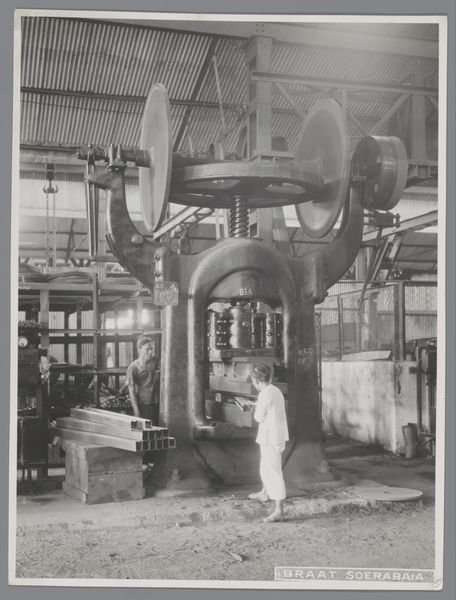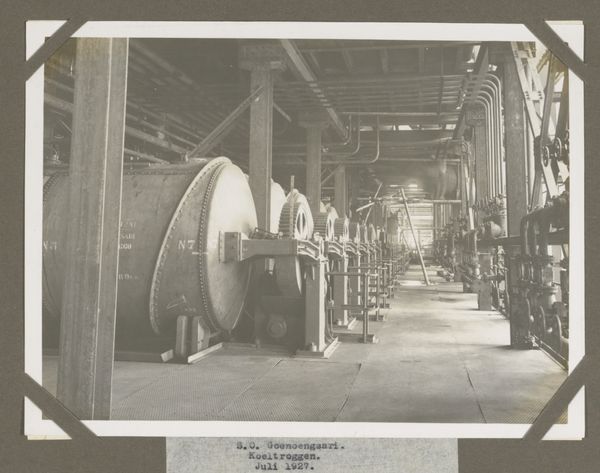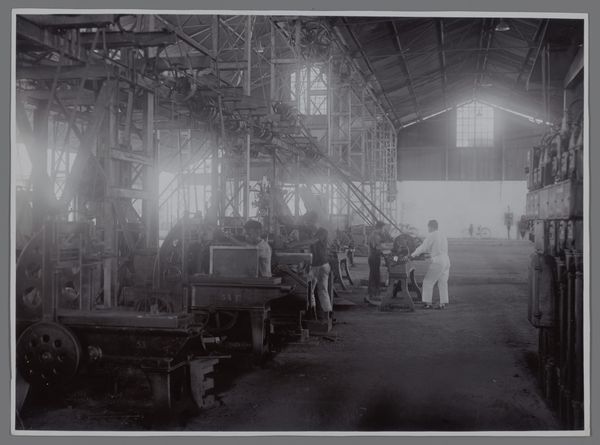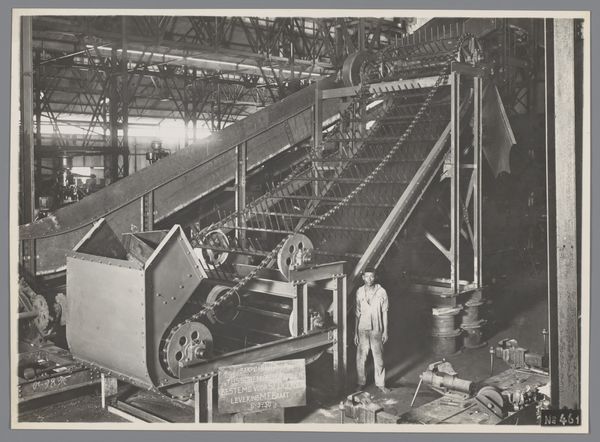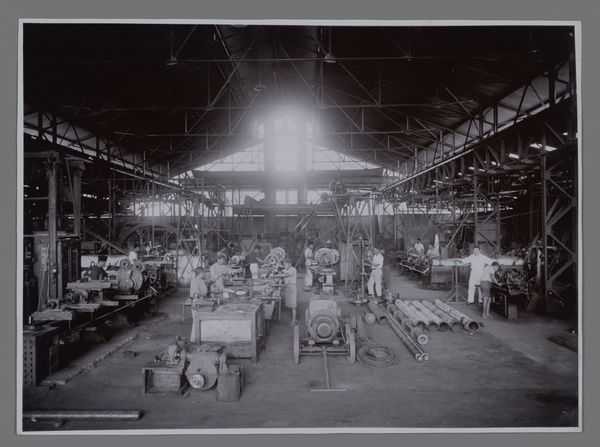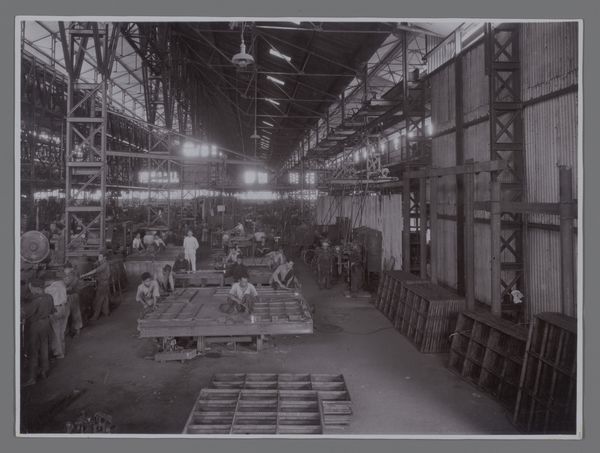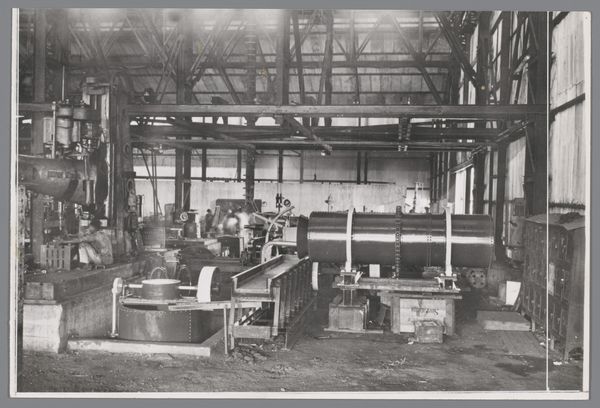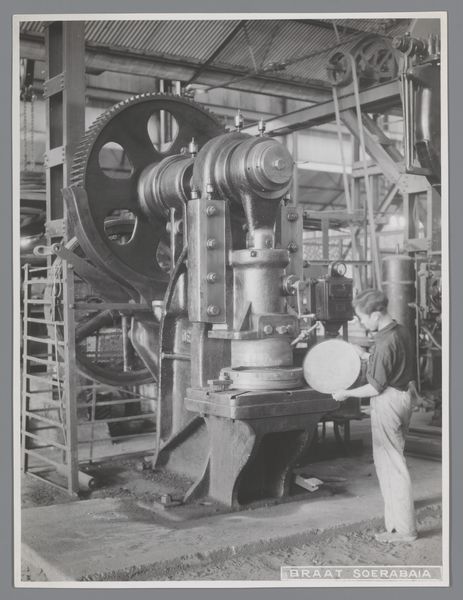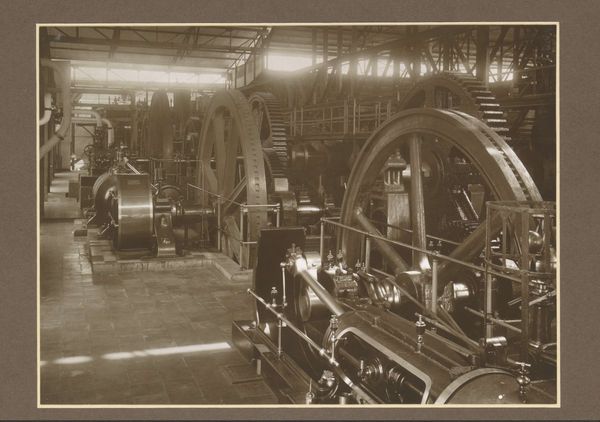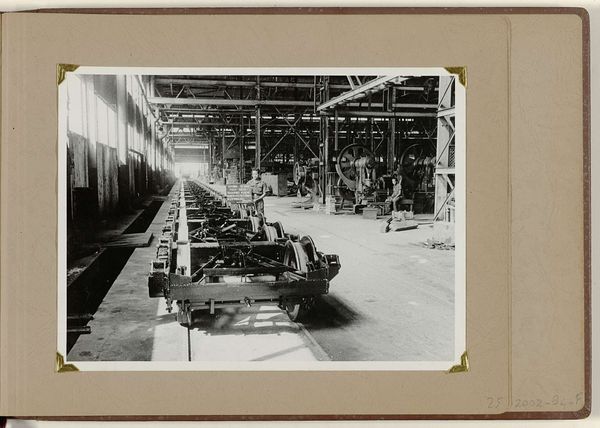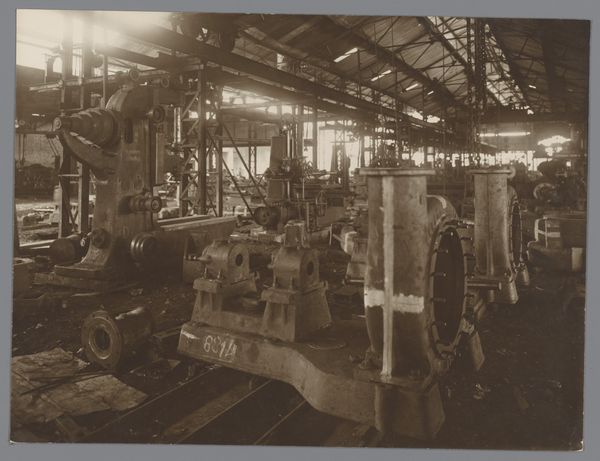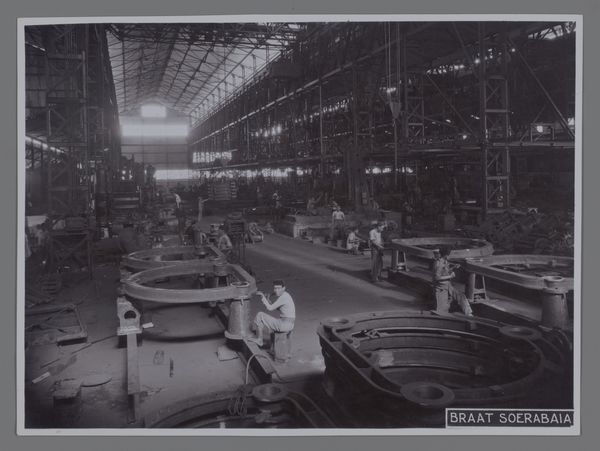
photography, gelatin-silver-print
#
photography
#
gelatin-silver-print
#
realism
Dimensions: height 121 mm, width 173 mm
Copyright: Rijks Museum: Open Domain
Editor: This is an anonymous gelatin silver print from 1925 titled "Tandkrans voor rietlosinrichting," currently at the Rijksmuseum. It depicts a large gear with a man standing in the center. The image feels industrial, highlighting the machinery, but I'm curious: what's your interpretation of this piece? Curator: This photograph speaks volumes about the societal forces at play in the early 20th century. We see this industrial technology – a gear, yes – but more importantly, we see its scale in relation to the individual. Consider the power dynamics inherent in the factory system. The worker, dwarfed by the machine, is rendered almost anonymous, a cog in the system. How does this contrast resonate with you in terms of labour and social equity? Editor: I see what you mean. The person almost becomes part of the machine. Were these kinds of images ever used as propaganda, celebrating the worker? Curator: Precisely. But it's crucial to unpack that. Propaganda often masks the exploitative nature of labor. While these images might appear celebratory, promoting industrial progress, they simultaneously obscure the human cost. Who really benefits from this "progress"? And at what expense to the individual worker's autonomy and well-being? How does knowing it's a gelatin silver print made in 1925 speak to photographic practices connected with labor representation and class issues? Editor: I hadn't thought of it that way. So it’s more about questioning the narrative than accepting it at face value. I now understand better that such imagery is a representation that does ideological work. Curator: Exactly! Recognizing that photographs are never neutral allows us to critically engage with the stories they tell, uncovering the hidden power structures they uphold or challenge. Always ask: whose perspective is centered, and whose is marginalized? Editor: That’s given me so much to think about regarding this picture, and image making in general. Thanks!
Comments
No comments
Be the first to comment and join the conversation on the ultimate creative platform.
